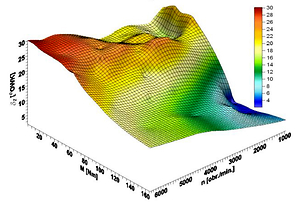Current issue
Online first
Archive
About the Journal
Aims and scope
Publisher and Editorial
Advertising policy
For Authors
Paper review procedures
Procedures protecting authentic authorship of papers
Paper preparation manual
Plagiarism check
Publication ethics
Reviewers
APC
Editorial and Scientific Board
Contact
Reviewers
SI engine fuel mixture type indicator and an assessment of its suitability of an economic driving style
1
Faculty of Mechanical Engineering, Uniwersytet Technologiczno-Humanistyczny im. Kazimierza Pułaskiego w Radomiu, Poland
Submission date: 2021-07-15
Final revision date: 2021-08-16
Acceptance date: 2021-08-16
Online publication date: 2021-09-08
Publication date: 2021-10-15
Corresponding author
Zbigniew Piotr Wołczyński
Faculty of Mechanical Engineering, Uniwersytet Technologiczno-Humanistyczny im. Kazimierza Pułaskiego w Radomiu, Malczewskiego 29, 26-600, Radom, Poland
Faculty of Mechanical Engineering, Uniwersytet Technologiczno-Humanistyczny im. Kazimierza Pułaskiego w Radomiu, Malczewskiego 29, 26-600, Radom, Poland
Combustion Engines 2021,187(4), 69-76
KEYWORDS
fuel consumptionSI engine with direct fuel injectionstratified and homogeneous mixturemixture type indicatoreconomical driving style
TOPICS
ABSTRACT
The article presents the structure and a principle of operation of a simple indicator of the type of a fuel-air mixture supplying a spark-ignition engine with a direct fuel injection. The designed indicator was tested, as a result of which its correct operation was verified. By using information from the indicator, it was possible to assess its usefulness for assisting the driver in an economical driving style. Preliminary studies show that thanks to the use of the developed indicator, it is possible to save about 10% of fuel as a result of the correction of the economic driving style on the route selected for the purpose of this research paper. The target of this study was to confirm a noticeable reduction in fuel consumption when supplying the engine with a stratified mixture. In order to obtain more accurate data, the research should be extended to include a greater number of routes and its division into urban and non-urban areas.
REFERENCES (8)
1.
LAKE, T., SAPSFORD, S., STOKES, J. et al. Simulation and development experience of a stratified charge gasoline direct injection engine. SAE Technical Paper 962014. 1996. https://doi.org/10.4271/962014.
2.
PIELECHA, I. Diagnostics of stratified charge combustion under the conditions of multiple gasoline direct injection. Journal of Thermal Analysis and Calorimetry. 2014, 118, 217-225. https://doi.org/10.1007/s10973....
3.
TSAI, W.-C., ZHAN, T.-S. An experimental characterization for injection quantity of a high-pressure injector in GDI engines. Journal of Low Power Electronics and Applications. 2018, 8(36). https://doi.org/10.3390/jlpea8....
4.
DURONIO, F., DE VITA, A., ALLOCCA, L. et al. Gasoline direct injection engines – a review of latest technologies and trends. Part 1: Spray breakup process. Fuel. 2020, 265, 116948. https://doi.org/10.1016/j.fuel....
5.
DURONIO, F., DE VITA, A., MONTANARO, A. et al. Gasoline direct injection engines – a review of latest technologies and trends. Part 2. Fuel. 2020, 265, 116947, https://doi.org/10.1016/j.fuel....
6.
LOIS, D., WANG, Y., BOGGIO-MARZET, A. et al. Multi-variate analysis of fuel consumption related to eco-driving: Interaction of driving patterns and external factors. Transportation Research Part D: Transport and Environment. 2019, 72, 232-242. https://doi.org/10.1016/j.trd.....
7.
ŻAK, M. Development of the fuel mixture indicator for the GDI engine of the Mitsubishi Carisma. Doctoral thesis. Kazimierz Pulaski University of Technology and Humanities in Radom, Faculty of Mechanical Engineering. 2021.
8.
WOŁCZYŃSKI, Z. Identification of properties of GDI engine and its control system. Combustion Engines. 2011, 146(3), PTNSS-2011-SC-116.
Share
RELATED ARTICLE
We process personal data collected when visiting the website. The function of obtaining information about users and their behavior is carried out by voluntarily entered information in forms and saving cookies in end devices. Data, including cookies, are used to provide services, improve the user experience and to analyze the traffic in accordance with the Privacy policy. Data are also collected and processed by Google Analytics tool (more).
You can change cookies settings in your browser. Restricted use of cookies in the browser configuration may affect some functionalities of the website.
You can change cookies settings in your browser. Restricted use of cookies in the browser configuration may affect some functionalities of the website.



